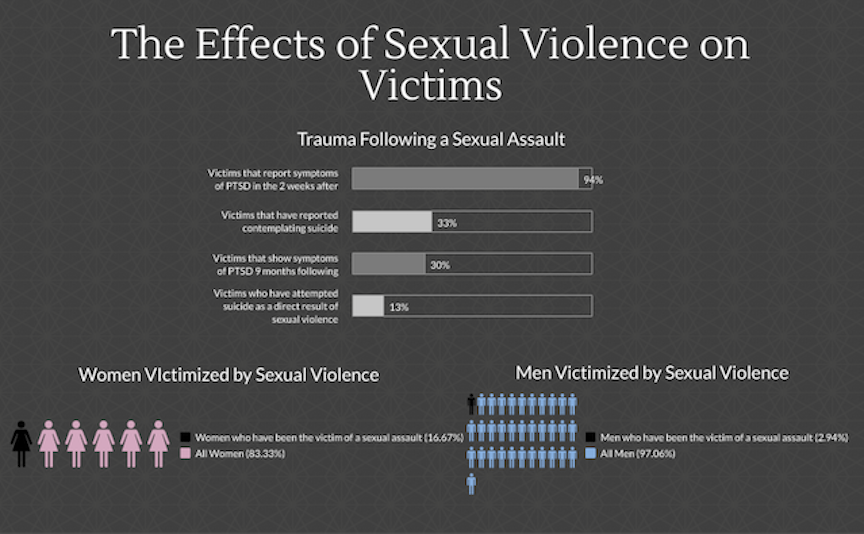Victims of sexual violence survive the impossible, and then have to survive it all over again every day of their life.
February 26, 2021
Trigger Warning: The following article includes mentions of Sexual Violence
In the United States, there are on average, 433,648 reported accounts, of sexual assault or rape every year. According to rainn.org, the nation’s largest anti-sexual violence organization, 94% of men and women who are victimized by sexual violence report symptoms of PTSD up to two weeks after a traumatic incident, and that’s only the beginning.
The #MeToo movement, beginning in 2006, but popularized in the last five years, acted as a way to advocate for females who have survived sexual violence and provided a safe platform for women to share their stories.
After the #MeToo movement lost popularity, many people seemed to believe that all the worst aspects of living through sexual abuse simply went away for survivors, but in the increasingly tumultuous political climate, this is far from the truth.
The reality of it is, is that there is no movement or one person that can fix everything in an instant, but we have to do better. We have to work to make the burden a little lighter, so those who are working on surviving have one less thing to worry about.
One thing that is certain, is that there is no blueprint for sexual assault. There is no set way in which it appears and no consistent form in which the trauma manifests. Because of this, we must first address the issue of identifying it, even if the victim themselves can’t.
In certain circumstances, such as Intimate Partner Sexual “Violence”, it becomes increasingly difficult for the victim to recognize what it is happening. It is seldom a one-time event and the majority of those who are physically or emotionally abused by an intimate partner, report being sexually assaulted by the same partner (rainn.org). Many report thinking their partner’s behavior was normal for a relationship and did not recognize the textbook signs of an abuser.
Those victimized by an intimate partner have an 84% chance of experiencing emotional issues or increased problems at work or school, compared to 67% of those victimized by a stranger (rainn.org). Because the risks following an intimate partner trauma are higher, and the chances of the victim reporting are decreased drastically, it is imperative people outside the situation know what to look for, to try to intervene before it’s too late. These signs include; the partner attempting to sever the victim from friends or family, the partner seems excessively jealous if the victim spends time away from them, and the partner seems to control every decision big or small, among others.
However, just because intimate partner sexual violence has a higher chance of leaving a long-term effect on the victim, it does not make creating a safe environment for all survivors any less important. Other forms, like sexual harassment in the workplace or schools, are often over looked but can have the same lasting impression as the offenses that are viewed as more severe.
There is a stigma around the words sexual assault and rape that has the capacity to make anyone uncomfortable, but not in the way you would think. People are scared to start the discussion of how to genuinely help survivors instead of brushing it under the rug, which contributes to the feelings of shame, fear, and denial that lead victims to not come forward in the first place.
However, all hope in protecting these vulnerable populations is not lost. Programs like, the CDC’s Rape Prevention and Education Program (RPE), are working to train teachers, parents, school counselors, and anyone else willing to listen to encourage positive communication skills in young children and teens, which could prevent further destructive actions and helping them add healthier coping mechanisms to their arsenal.
It may seem like a problem far removed from us, but females ages 16-19 are four times more likely than the general population to be victims of rape, attempted rape, or sexual assault. This should be a wakeup call for our generation. We must continue to speak out and bring attention to the issue on a large scale, but also look out for our peers on a more personal level. It could mean saving a life.
If you or anyone you know is a victim of sexual abuse call, the sexual assault hotline at 1-800-656-4673
If you or anyone you know is in immediate danger, call 911



